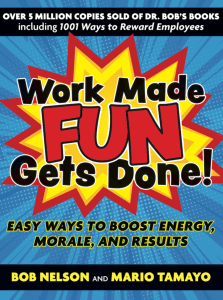A Guide For Creating A Happier Workplace For Your Business
A happy workplace is one that will improve the satisfaction of staff, increase productivity, and ultimately help your business achieve greater success.
If you are a business looking to create a happier workplace, use this guide for all of the best and effective tips.
Offer more engagement
Offering more engagement in the workplace will help employees interact more, which will help create better workplace relationships. If your employees do not have a great relationship it could cause tension or delay problems getting fixed. When a problem arises, it is much easier solved when staff is friendly with one another. They will be able to talk through the issue and find a resolution.
Increased employee engagement is important as it will encourage a happier workplace environment, make every member of the team feel involved, and create better relationships.
Show staff your recognition
When staff does something above and beyond or expectations or achieves their work goals, it is good to show them recognition and praise them.
Praising employees will only make them feel more appreciated, which will make them more confident and happy in their job. It could be as simple as giving them a bonus in their monthly paycheck or hosting a lunch to celebrate their success.
Make meaningful conversations
It is common for workplaces to create meaningless conversations to simply continue relationships. Yet, meaningful relationships are what create a happier workplace.
Therefore, it is crucial to create meaningful conversations so that relationships become meaningful. This means to talk about emotions and personal life as much as it does work. Although you might not want to get too personal with your colleagues and employees, it helps to create closer connections so that you can maintain happiness and create trusting friendships.
Reward staff
From time to time, it is a good idea to reward staff (but only those that have shown effort) to show them you appreciate them. It will encourage them to do better and maintain productivity, which will provide benefits for your business.
As much as you will want to reward them with financial benefits, it is a good idea to reward them in other ways. Besides, you will be offering them financial gains to show them recognition when they have achieved something (as mentioned above).
Rewarding staff with longer lunches, in-office parties, and social events is a great way to help them feel encouraged to create relationships and feel appreciated. Small rewards go a long way and will push staff to be productive, motivated, and maintain happiness.
Upgrade the workspace
Giving employees an upgraded workspace will not only help them feel a new sense of excitement to work, but a purposeful workspace will help them stay productive and comfortable.
For instance, adding standing desks and new comfortable chairs will enhance comfort and help people maintain focus for longer. It will also help employees avoid back pains, which will keep them happy.
Likewise, adding brighter lights, larger windows, and decor will make the office a more exciting place to be.
Offer social events
A social workspace is one that is bound to make employees feel happier. The less communication and fun that goes on, the fewer work relationships there will be.
You will want to encourage workplace relationships for the sake of staff’s mental health as well as the success of your business. Staff that communicates will one another can resolve and overcome issues as opposed to feeling tense when an issue arises. The friendly staff will work together to jump over hurdles and come out better on the other end, which will boost their efficiency and offer more success for your business.
Encourage better health
Healthier staff will equate to happier staff. Therefore, it is important to encourage better health in the office. For instance, standing desks is a great way to help people stretch and feel more encouraged to move around while working.
Furthemore, offering staff in-office lunches might help them make healthier lunch choices.
Encouraging staff to go for lunchtime walks or offering discounts on gym memberships will influence them to maintain regular exercise.
All of these things will contribute to better health and can make staff feel more energetic and happy while at work, as well as in their personal life.
Offer learning sessions
Some staff enjoys extra learning so that they can attain new skills to apply for job promotions or simply feel more capable of their everyday role. Therefore, it is a good idea to offer extra learning in the workplace so that your staff can attain more skills and knowledge.
You can do this by offering after-work learning or asking certain members of staff to take on a new responsibility that will help them learn on the job. The more equipped staff are with skills, the happier and more confident they will feel in the workplace.
Or, you could pay for them to take external courses that will benefit their skills and qualifications for their current job, or a role up that they want to apply for internally.
Identify weaknesses
Identifying your business’s weaknesses will help you improve your business, which will likely make the workplace much happier. For instance, you might not offer enough social support for your employees. You could identify this by asking your staff for feedback. Therefore, you can use the feedback to improve your business and offer more social support.
The more feedback you attain from your employees, the better you can make your business, which will make for a happier workplace.
Likewise, identifying the weaknesses of individual employees can help them improve. You could talk to them about their weaknesses and offer to help them improve. Make sure to be gentle with how you tell them and let them know the benefits of working on the weakness. You can let them know that you have your own weaknesses and tell them how you overcome them, which has helped you improve at work and therefore, helped you achieve greater success.








